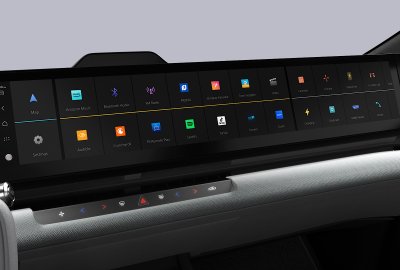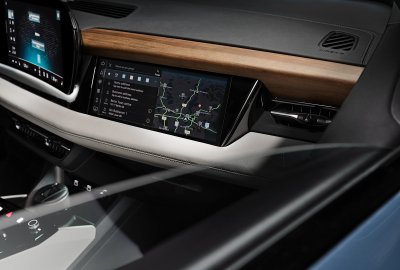For the last several years, automakers have pushed more and larger screens to market in their latest vehicles. Some are now pulling back while others are upping their commitment.
"We're well into this 'digital arms race' that has seen one automaker releasing the biggest screen, only to be one-upped by a competitor going bigger in their next model refresh," Brian Rhodes, director of connected car and vehicle experience at S&P Global Mobility, told Newsweek.
"At some point, the inches of screen loses importance and the focus is much more placed on user experience, content, updatability and value-add to the driving/passenger experience. We've seen a number of automakers over-digitalize things like volume control, only to bring them back based on customer complaints. More screen absolutely can add value, but it does not necessarily add value," he said.
Now-defunct Fisker used a rotating screen to intrigue new vehicle shoppers. Afeela, from startup partnership Sony Honda Mobility, aims to "redefine the relationship between people and mobility and utilizing AI and sensing technologies," a spokesperson told Newsweek at CES, a consumer electronics trade show.
The company's first car out of the gate, Afeela 1, has twin 12.9-inch displays for rear passengers and a pillar-to-pillar screen housing across the car's dashboard. The main infotainment touchscreen features a long list of available apps, including access to Sony's Xbox technology, and controls the car's "themes," lighting and screen skins that are designed to enhance the user experience.
Afeela's screen does not intrude into the center console like the Mercedes-Benz Hyperscreen. That setup features pillar-to-pillar glass in a "T"-like shape that continues vertically as well as horizontally inside the car. Under one housing are three screens, a 12.3-inch digital gauge cluster, 17.7-inch infotainment screen and a 12.3-inch front passenger screen.
"I wouldn't say Afeela is late when it comes to an approach to display technology. What's far more important is how that screen operates in driving conditions, and what Sony Honda Mobility decides to do as a content strategy. One very interesting aspect of the partnership Sony brings to the table is being a content house, and that is something Afeela wants to tap into. Many content relationships have been launched in the past year with the likes of Amazon Fire TV and others that point to the opportunity certain automakers see in bringing this content into their vehicle ecosystems," Rhodes said.



Recent Mercedes models have gone away from the Hyperscreen, breaking up the housing into separate components, like in the new E-Class and forthcoming CLA sedans.
Jeep, Audi and Porsche have also taken this tack. Audi's look is the most extreme with the A6 E-Tron's cockpit separated from the passenger screen with not just dashboard, but tilted design elements that obscure some of it from the driver.
Most passenger screens allow an element of gaming or video content streaming. Under certain conditions, when a car is charging and not in motion, for example, the central infotainment screen can be used to play games or watch YouTube videos.
Mercedes Drive Pilot hands-off, eyes-off driving technology allows this functionality while the car is autonomously piloted on highways.
Lincoln uses its pillar-to-pillar screen, nestled between the top of the dashboard and the windscreen in the Nautilus, differently than many others. As part of its Lincoln Rejuvenate multisensory experience, the screen can display a variety of animated landscapes designed to immerse the user in a spa-like experience while they sit with the vehicle parked.


In its latest concept technology demonstration, BMW announced that it's pulling back from putting large screens inside its next-generation vehicles. The company's current-generation 7 Series sedan is available with a 12.3-inch digital gauge cluster that is paired with a 14.9-inch infotainment screen. A 31.3-inch 8K rear entertainment screen is also available.
BMW Panoramic iDrive features projections on a large, blacked-out area of the windshield, showing the same information a screen would serve in the same place.
Many automakers are also exploring next-generation heads-up display technology, which puts vital information on a plane in alignment with the road ahead, keeping eyes forward rather than having to glance at a screen.
About the writer
Eileen Falkenberg-Hull leads the Autos team at Newsweek. She has written extensively about the auto industry for U.S. News & ... Read more



